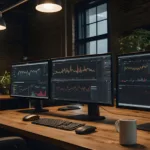Understanding Technical SEO: The Foundation of Digital Success
If you’re running a business online, technical SEO isn’t just another buzzword—it’s the backbone that holds your entire digital presence together. I’ve seen countless beautiful websites fail miserably because their owners overlooked the technical foundation that makes everything work. Moreover, while competitors master these fundamentals, businesses with stunning designs but poor technical optimization remain invisible to potential customers.
Technical SEO represents the behind-the-scenes work that helps search engines crawl, index, and understand your website efficiently. Furthermore, it directly impacts user experience, which Google now considers a critical ranking factor. When your technical foundation is solid, everything else—your content marketing, conversion rate optimization, and paid advertising—performs significantly better.
Critical Technical SEO Elements That Drive Rankings
Let’s dive into the core elements that separate successful websites from digital ghosts. These aren’t optional features; they’re mandatory components for any business serious about online visibility.
Website Speed Optimization and Core Web Vitals
Page speed directly impacts both user experience and search rankings. Specifically, Google’s Core Web Vitals measure three critical aspects of user experience:
- Largest Contentful Paint (LCP) – Your main content should load within 2.5 seconds
- First Input Delay (FID) – User interactions should respond within 100 milliseconds
- Cumulative Layout Shift (CLS) – Visual stability score should remain below 0.1
To optimize these metrics, I recommend compressing images using WebP format, implementing browser caching, and minimizing JavaScript execution. Additionally, choosing quality hosting makes a tremendous difference—cheap hosting often costs more in lost customers than you save in monthly fees.
Mobile-First Indexing Implementation
Since Google predominantly uses mobile versions for indexing and ranking, your mobile experience must be flawless. Consequently, responsive design isn’t optional—it’s essential for survival in modern search results.
Your mobile optimization checklist should include touch-friendly navigation buttons (minimum 44px), readable text without zooming, and fast loading on slower connections. Furthermore, test your site regularly on various devices to ensure consistent performance across different screen sizes and operating systems.
Advanced Technical SEO Strategies for Competitive Markets
Once you’ve mastered the basics, advanced technical SEO techniques help you outrank competitors who stop at surface-level optimization.
Schema Markup and Structured Data Implementation
Schema markup acts as a translator between your content and search engines, helping them understand context and meaning. Here’s a practical example of local business schema markup:
<script type="application/ld+json">
{
"@context": "https://schema.org",
"@type": "LocalBusiness",
"name": "Your Business Name",
"address": {
"@type": "PostalAddress",
"streetAddress": "123 Main Street",
"addressLocality": "Newark",
"addressRegion": "NJ",
"postalCode": "07102"
}
}
</script>
Different schema types serve various purposes: Article schema for blog posts, Product schema for e-commerce, and FAQ schema for frequently asked questions. Each type provides search engines with specific information that can enhance your search result appearance through rich snippets.
XML Sitemaps and Crawl Optimization
Your XML sitemap serves as a roadmap for search engine crawlers, directing them to your most important pages. However, many businesses create bloated sitemaps that include unnecessary pages, diluting the importance of critical content.
An effective sitemap strategy includes only indexable pages, updates automatically when you publish new content, and prioritizes pages based on business importance. Additionally, implementing proper robots.txt directives prevents crawlers from wasting time on irrelevant sections like admin pages or duplicate content.
Common Technical SEO Mistakes That Destroy Rankings
I’ve audited hundreds of websites, and these recurring mistakes consistently harm search performance. Avoiding them gives you an immediate advantage over competitors making these same errors.
Duplicate Content and Canonicalization Issues
Duplicate content confuses search engines and dilutes your ranking potential. Common sources include:
- WWW vs. non-WWW versions of your site
- HTTP and HTTPS versions existing simultaneously
- Parameter-based URLs creating multiple versions of the same page
- Print-friendly pages without proper canonical tags
Implementing canonical tags correctly resolves these issues. For example: <link rel="canonical" href="https://www.yoursite.com/preferred-version/" /> tells search engines which version to prioritize for ranking purposes.
Internal Linking Structure and Architecture Problems
Poor internal linking creates orphaned pages that search engines struggle to discover and understand. Moreover, flat site architecture without logical hierarchy confuses both users and crawlers about your content’s relative importance.
Effective internal linking distributes page authority throughout your site while creating clear pathways for users to find related information. Furthermore, descriptive anchor text helps search engines understand the context and relationship between linked pages.
Technical SEO Measurement and Monitoring
Measuring technical SEO success requires tracking specific metrics that directly correlate with search performance and user experience. Consequently, setting up proper monitoring helps you identify issues before they impact rankings.
Essential Technical SEO Metrics
Focus on these key performance indicators:
- Crawl Error Rate – Should remain below 1% of total pages
- Index Coverage – Important pages should achieve 95%+ indexation
- Page Load Speed – Target under 3 seconds for desktop, 4 seconds for mobile
- Mobile Usability Score – Aim for zero mobile usability issues
- Server Response Time – Should consistently stay under 200ms
Google Search Console provides most of these metrics for free, while tools like PageSpeed Insights offer detailed optimization recommendations. Additionally, regular technical audits help identify emerging issues before they impact your search visibility.
Integrating Technical SEO with Overall Digital Strategy
Technical SEO doesn’t exist in isolation—it amplifies the effectiveness of your entire digital marketing ecosystem. When combined with comprehensive SEO strategies, technical optimization creates a solid foundation for sustainable growth.
For instance, your SEM campaigns benefit from faster landing pages that improve Quality Scores and reduce cost-per-click. Similarly, proper technical implementation supports content marketing efforts by ensuring search engines can properly crawl and index your valuable content. Moreover, technical optimization directly impacts user experience, which influences conversion rates across all marketing channels.
How long does it take to see results from technical SEO improvements? Technical SEO improvements typically show results within 2-8 weeks, depending on how frequently search engines crawl your site. Critical fixes like page speed improvements and mobile optimization often show impact faster than structural changes like site architecture modifications.
Can I handle technical SEO myself, or do I need professional help? Basic technical SEO tasks like optimizing images and fixing broken links are manageable for most business owners. However, complex issues involving server configuration, schema implementation, and site architecture typically require professional expertise to avoid costly mistakes that could harm your rankings.
What’s the most important technical SEO factor for local businesses? For local businesses, mobile optimization combined with proper local schema markup provides the biggest impact. Since most local searches happen on mobile devices, ensuring your site works perfectly on smartphones while providing search engines with accurate business information drives the most significant results.
 Written by: Romulo Vargas Betancourt
Written by: Romulo Vargas Betancourt
CEO – OpenFS LLC





